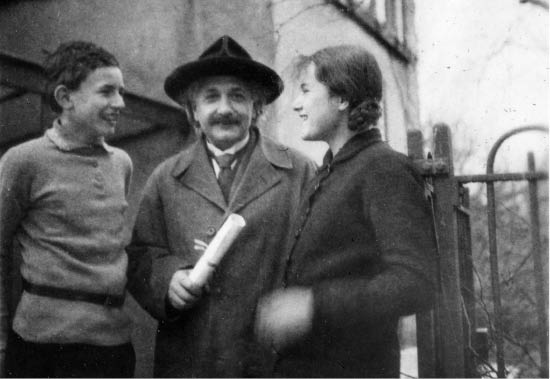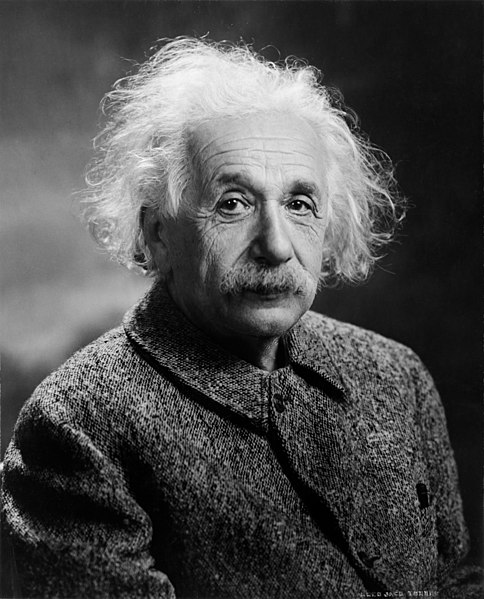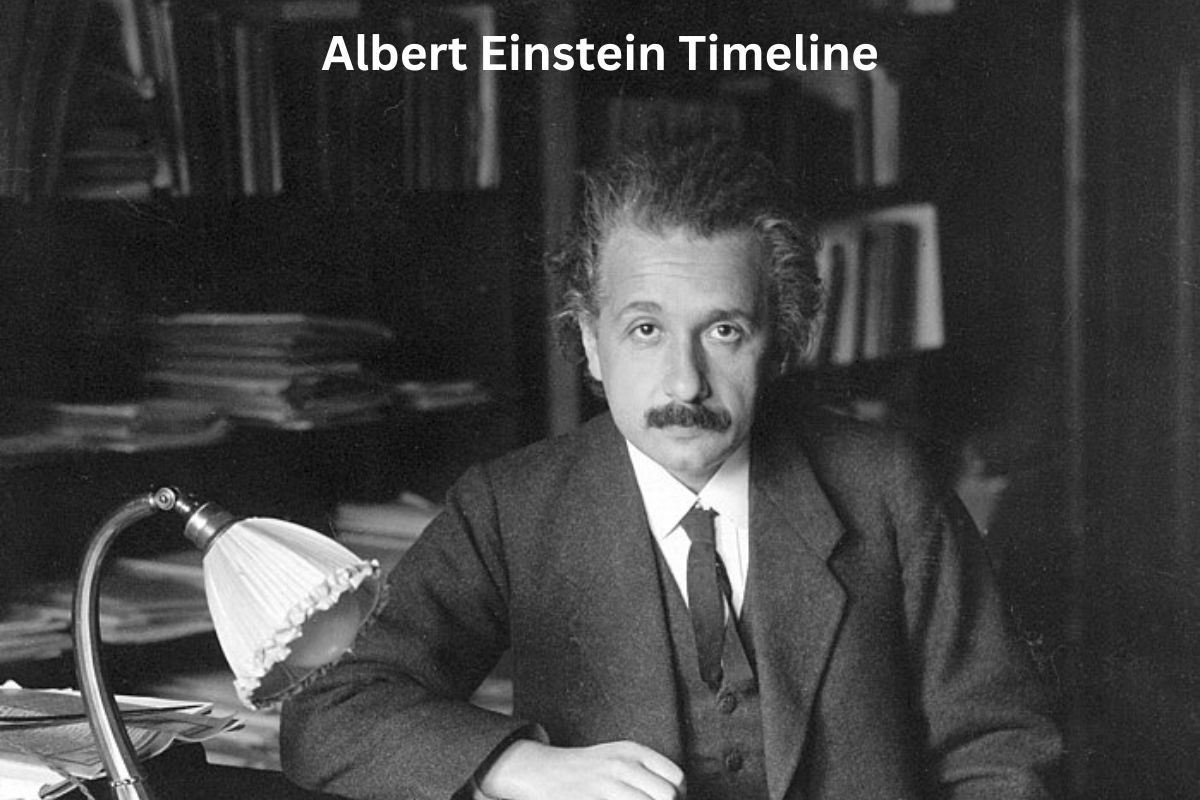Albert Einstein (1879-1955) was a renowned physicist known for his revolutionary theories of relativity.
Born in Germany, he overcame early academic struggles to become a scientific icon. In 1905, he published groundbreaking papers, including the theory of relativity and the photoelectric effect, earning him the Nobel Prize in Physics in 1921.
Fleeing Nazi Germany in 1933, he moved to the United States, where he continued his research and advocated for peace and civil rights. Einstein’s legacy as a scientific genius and humanitarian endures, and he passed away in 1955 in Princeton, New Jersey.
| Year | Event |
| 1879 | Albert Einstein is born in Ulm, Germany. |
| 1880s-1890s | Einstein’s early years are marked by academic struggles and a rebellious attitude towards formal education. |
| 1895 | Einstein fails an entrance exam to the Swiss Federal Polytechnic in Zurich. |
| 1896 | Einstein enrolls at the Swiss Federal Polytechnic in Zurich after passing the entrance exam on his second attempt. |
| 1900 | Einstein graduates from the Swiss Federal Polytechnic with a teaching diploma in physics and mathematics. |
| 1901 | Einstein becomes a Swiss citizen and takes a job as a patent examiner at the Swiss Patent Office in Bern. |
| 1905 | Einstein publishes four groundbreaking papers in the journal Annalen der Physik, which revolutionize the field of physics: Special Theory of Relativity, Photoelectric Effect, Brownian Motion, Mass-Energy Equivalence |
| 1907 | Einstein publishes a paper on the theory of specific heat, known as the “Einstein model.” |
| 1913 | Einstein is appointed professor of theoretical physics at the University of Berlin. |
| 1915 | Einstein completes the theory of General Relativity, which describes the gravitational force as the curvature of spacetime. |
| 1919 | Sir Arthur Eddington’s expedition confirms Einstein’s General Theory of Relativity during a solar eclipse. |
| 1921 | Einstein is awarded the Nobel Prize in Physics for his explanation of the photoelectric effect. |
| 1933 | Due to the rise of the Nazi regime in Germany, Einstein leaves Berlin and emigrates to the United States, where he takes a position at the Institute for Advanced Study in Princeton, New Jersey. |
| 1939 | World War II begins, and Einstein signs a letter to President Franklin D. Roosevelt, urging the development of nuclear weapons to counter the potential threat from Nazi Germany. |
| 1940 | Einstein becomes a United States citizen. |
| 1945 | World War II ends, and the atomic bomb is dropped on Hiroshima and Nagasaki, prompting Einstein to become an advocate for nuclear disarmament. |
| 1952 | Einstein is offered the presidency of the newly formed State of Israel but declines. |
| 1955 | Albert Einstein dies on April 18, 1955, in Princeton, New Jersey, at the age of 76. |
Timeline of Albert Einstein
1879: Born in Ulm, Germany
On March 14, 1879, Albert Einstein was born in the city of Ulm, which was then part of the Kingdom of Württemberg in the German Empire. He was born to Hermann Einstein, an engineer and salesman, and Pauline Koch, a homemaker.
At the time of his birth, Einstein’s family was of modest means, and they would go through periods of financial difficulty during his early years.

1896: Enrolled at the Swiss Federal Polytechnic
After completing his early education in Munich, Germany, and Aarau, Switzerland, Einstein decided to pursue higher education in the field of physics and mathematics.
Also Read: Albert Einstein Accomplishments
In 1896, he successfully passed the entrance examination and enrolled at the Swiss Federal Polytechnic in Zurich. This marked a turning point in his life as he began to dedicate himself more seriously to his studies, despite some initial struggles.
1900: Graduated with a teaching diploma
In 1900, Albert Einstein graduated from the Swiss Federal Polytechnic with a teaching diploma in physics and mathematics. Despite his earlier academic challenges, he excelled in his studies during his time at the university.
Following his graduation, he began seeking employment opportunities related to his field of study. However, it wasn’t until 1902, after a period of temporary work and some tutoring, that he secured a position as a technical assistant at the Swiss Patent Office in Bern, Switzerland.
1901: Became a Swiss citizen and worked at the Swiss Patent Office
In 1901, Albert Einstein officially became a Swiss citizen after renouncing his German citizenship to avoid mandatory military service in the German Empire. Shortly after gaining Swiss citizenship, he secured a job as a patent examiner at the Swiss Patent Office in Bern.
Also Read: Albert Einstein Facts
This position allowed him to support himself financially while also providing him with the time and stability to pursue his scientific interests.

1905: Published four groundbreaking papers
The year 1905 is often referred to as Einstein’s “Annus Mirabilis” or “Miracle Year” because during this time, he published four groundbreaking papers that would profoundly impact the course of modern physics:
- Special Theory of Relativity: In his paper “On the Electrodynamics of Moving Bodies,” Einstein introduced the Special Theory of Relativity. This theory revolutionized our understanding of space and time, with the famous equation E=mc² demonstrating the equivalence of mass and energy.
- Photoelectric Effect: In his paper on the photoelectric effect, Einstein explained that light consists of discrete packets of energy called photons. This work contributed to the development of quantum mechanics and earned him the Nobel Prize in Physics in 1921.
- Brownian Motion: Einstein published a paper on the erratic motion of small particles suspended in a fluid. His explanation of this phenomenon provided strong evidence for the existence of atoms and molecules.
- Mass-Energy Equivalence: In a supplementary paper to his Special Theory of Relativity, Einstein further explored the concept of mass-energy equivalence, showing that the total energy of a closed system remains constant.
These four papers established Einstein as a leading physicist of his time and laid the foundation for many subsequent advancements in physics.
1907: Publishes the Einstein Model
In 1907, Albert Einstein published a paper introducing what is now known as the “Einstein Model” or “Einstein Solid.” This model described the behavior of solids as collections of harmonic oscillators, each representing a vibrational degree of freedom.
It contributed to the understanding of heat capacity and played a role in the development of quantum mechanics. The Einstein Model was an important contribution to the field of statistical mechanics and marked another step in Einstein’s scientific journey.
1907: Einstein’s Work on Brownian Motion
In 1907, Albert Einstein continued to work on his explanation of Brownian motion, which he had first published in 1905. He developed a detailed mathematical model that described the erratic motion of particles suspended in a fluid, such as dust particles in water.
His work provided strong evidence for the existence of atoms and molecules, supporting the atomic theory. This research earned him recognition in the scientific community and further established his reputation as a physicist.

1913: Appointed professor at the University of Berlin
In 1913, Einstein was appointed as a professor of theoretical physics at the University of Berlin (now known as Humboldt University of Berlin).
This appointment marked a significant step in his academic career, and he moved to Berlin with his family. During his time in Berlin, Einstein continued his research and developed his theory of General Relativity.
1915: Completed the theory of General Relativity
In 1915, Albert Einstein completed his theory of General Relativity. This theory introduced a new understanding of gravity, postulating that massive objects warp the fabric of spacetime, causing other objects to move on curved paths.
General Relativity replaced Isaac Newton’s theory of gravity and made several predictions, including the bending of light by gravity. These predictions were confirmed through observations during a solar eclipse in 1919, catapulting Einstein to international fame.
1919: General Relativity confirmed during a solar eclipse
In 1919, during a total solar eclipse, British astrophysicist Sir Arthur Eddington led an expedition to Principe Island and Sobral, Brazil, to observe the apparent shift in the positions of stars near the sun due to the bending of light predicted by Einstein’s General Theory of Relativity.
The observations confirmed Einstein’s predictions, providing experimental validation for his revolutionary theory. This event made headlines worldwide and established Einstein as a scientific icon.
1921: Awarded Nobel Prize in Physics for the photoelectric effect
In 1921, Albert Einstein received the Nobel Prize in Physics for his explanation of the photoelectric effect, where he demonstrated that light consists of discrete packets of energy called photons, and these photons release electrons from a material’s surface when their energy surpasses a certain threshold.

1933: Emigrated to the United States
After the confirmation of his General Theory of Relativity in 1919, Albert Einstein gained worldwide acclaim as a brilliant physicist.
However, his time in Germany became increasingly challenging due to political and social upheaval, including the aftermath of World War I and the rise of the Nazi Party.
In 1933, Einstein decided to leave Germany and emigrate to the United States to escape the growing anti-Semitic climate and persecution of Jewish intellectuals.
1940: Became a U.S. citizen
In 1933, upon arriving in the United States, Albert Einstein initially took up a position at the California Institute of Technology (Caltech). Later, in 1935, he accepted a position at the Institute for Advanced Study in Princeton, New Jersey, where he would spend the rest of his academic career.
During his time in the United States, Einstein became increasingly involved in humanitarian and political activities, advocating for pacifism and civil rights.
In 1940, five years after he had emigrated to the U.S., Albert Einstein became a naturalized American citizen. His decision to become a U.S. citizen reflected his commitment to his new home and his desire to contribute to the nation’s scientific and political endeavors.
1955: Passed away in Princeton, New Jersey
On April 18, 1955, Albert Einstein passed away in Princeton, New Jersey, marking the end of an era in the world of science. His death occurred at the age of 76, and it was the culmination of a remarkable life that had left an indelible mark on the fields of physics, mathematics, and even philosophy.
